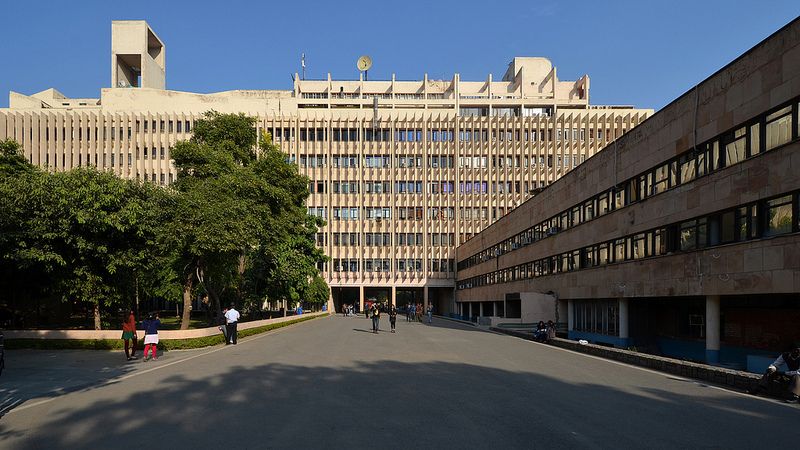One of the most unique systems of social stratification exists in South Asia. The “caste” system finds its origin in the Indian subcontinent as espoused under Hinduism. However, the impact and effect of this social system transcends religious communities and geographical boundness and has ingeniously adapted itself to the socio-economic conditions of most of the countries in the wider South Asian region. To limit caste within the borders of a single definition would be a great folly that could result in the loss of vital social analysis. Caste has myriad definitions depending on the vantage point one wants to adopt. Nonetheless, the one common element that binds all the existing interpretations of caste is the effect that it produces – discrimination and disempowerment of a particular group of people on the basis of their birth.
Caste has a material dimension and an ideological dimension. The two cornerstones of the caste system rest on the concepts of impurity and the monopoly of knowledge that it fosters. These ideas and practices manifest themselves on an economic, cultural, social and political scale. Caste divides a group of people in the context of the economic work that they engage in – while some work is considered to be pure some are not. Following this categorisation, four broad caste groups exist – the Brahmins, the Kshatriyas, the Vaishyas and the Shudras. The first two are upper caste groups, the third the middle caste group and the fourth the lower caste or untouchable caste. The monopoly of knowledge that exists within the fold of caste that reinforces its idea of purity/impurity is something that still troubles India despite the grand claims of equality it makes.
The right to education and knowledge was heavily guarded by Brahmin folk. They could read and write while the lower castes could not. This unequal access to knowledge was further strengthened by the colonial rule that perpetuated caste access to education. Indian independence came with the promise of breaking free from the shackles of the dogmatic views of the caste system with a wholehearted acceptance of modernity. The premier tier of Indian educational institutions like the Indian Institute(s) of Technology (IIT) and the Indian Institute(s) of Management (IIM) was to be the cornerstone of development in post- independent India. However, the shadow of caste and its logic could not be overcome.
The IITs and IIMs have been gatekeeping the monopoly of knowledge in brahmin hands. The composition of these institutes including the administration, faculty and students has been overwhelmingly upper caste. A recent study reported that only 6 lower caste professors from the schedule tribe and schedule caste group are presently employed across the 22 IITs in India. The number of lower caste students and scholars enrolled across the IITs and IIMs remains on the lower end with the upper castes being present in dominant numbers. These disparities and discrepancies are justified and defended on the grounds of ‘merit’ where the uninterrupted discrimination faced by lower caste groups in faculty positions or as students/scholars is simply presented as the idea of them not being good enough. However, the very ideas that go into the concept of merit fostered by the IITs, and IIMs are casteist in their inception and perpetuation.
When India operationalised its affirmative action policy of reservation for the schedule castes and schedule tribes – the opposition and backlash as witnessed by AIMS, IIT and IIM were tremendous. The students at the institutes mobilised into collectives like – Youth for Equality and demanded that reservations should not be implemented at any cost. The biased attitude as displayed in the 1990s has continued to exist till today. These biases are evident from the discrimination and alienation that the lower caste group face in these institutes leading to the high number of suicide cases that have been recorded in recent times. The Department of Education of India has reported that more than 60% of those who drop out of these institutions are members belonging to the lower caste. The discrimination is not limited to students alone and a professor recently resigned from IIT Madras alleging discriminatory practices at the university and no proper mechanism of redressal.
The nature of Indian society was hierarchical and has remained so. Caste-based differentiation and tiering exist even with concepts like social justice, affirmative action and reservation existing as policy measures and judicial laws. The problem can only be addressed when social perceptions of caste and its effects and the behaviour that individuals internalise and display in response to these perceptions are studied in terms of the deprivation faced by caste groups. The gatekeepers of caste are those in charge of the very institutions built to combat India’s direst weaknesses. The IITs and IIMs while proudly displayed as modern India’s greatest achievements are also the perpetrators of India’s darkest social force – caste. The exceedingly discriminatory nature of these institutions is getting harder to conceal in recent times. However, the path to true caste equality in these institutions of eminence remains elusive and difficult. As long as India as a society and polity harbour certain ideas of excellence and brilliance being the monopoly of particular social groups, caste-based discrimination will be the starkest reality of Indian higher education.
Image – IIT Delhi

